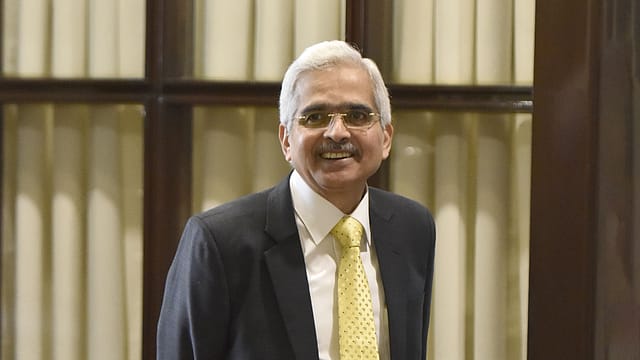MPC remains vigilant of evolving inflation dynamics: RBI governor
ADVERTISEMENT

Volatile energy and food prices in the wake of lingering geopolitical tensions and adverse weather conditions render uncertainty to the inflation outlook, according to RBI governor Shaktikanta Das.
"I would like to emphatically reiterate that our inflation target is 4% and not 2 to 6%. Our aim is to align inflation to the target on a durable basis, while supporting growth. Our commitment to ensure financial stability reinforces our emphasis on price stability and anchoring of inflation expectations. This would keep inflation risk premium low and improve our competitiveness, productivity and growth potential," says RBI governor Das while reading the monetary policy statement.
The monetary policy committee (MPC) decided by a majority of 5 out of 6 members to remain focused on the withdrawal of accommodation to ensure that inflation progressively aligns with the target while supporting growth.
This comes after headline inflation surged in July driven by tomato and other vegetable prices. It corrected partly in August and is expected to see further easing in September on the back of moderation in these prices.
A silver lining amidst all these is declining core inflation (i.e., CPI excluding food and fuel), says Das. The overall inflation outlook, however, is clouded by uncertainties from the fall in kharif sowing for key crops like pulses and oilseeds, low reservoir levels, and volatile global food and energy prices, he adds.
December 2025
The annual Fortune 500 India list, the definitive compendium of corporate performance, is out. This year, the cumulative revenue of the Fortune 500 India companies has breached $2 trillion for the first time. Plus, find out which are the Best B-schools in India.
Core inflation softened to 4.9% during July-August 2023. It has eased by around 140 basis points from its recent peak in January 2023. "Further disinflation of the core component is critical for price stability. As evident from our survey, there is further progress on anchoring inflation expectations which entered the single digit zone for the first time since the COVID-19 pandemic," Das says.
While near-term inflation is expected to soften on the back of vegetable price correction, especially in tomatoes, and the reduction in LPG prices, the future trajectory will be conditioned by a number of factors, according to Das. "For kharif crops, the area sown under pulses is below the level a year ago. Kharif onion production needs to be watched closely. Demand-supply mismatches in spices are likely to keep these prices at elevated levels. The inflation trajectory will also be shaped by El Niño conditions and global food and energy prices. Together with global financial market volatility, these factors pose risks to the outlook," says Das.
Taking into account these factors, CPI inflation is projected at 5.4% for 2023-24, with Q2 at 6.4%, Q3 at 5.6% and Q4 at 5.2%. CPI inflation for Q1 FY25 is projected at 5.2%.
While major central banks are signalling a peaking of their rate hike cycle, there are indications that the tight monetary policy stance could persist for longer than anticipated earlier, Das says adding that global trade is contracting.
The MPC observed that the recurring incidence of large and overlapping food price shocks can impart generalisation and persistence to headline inflation.
